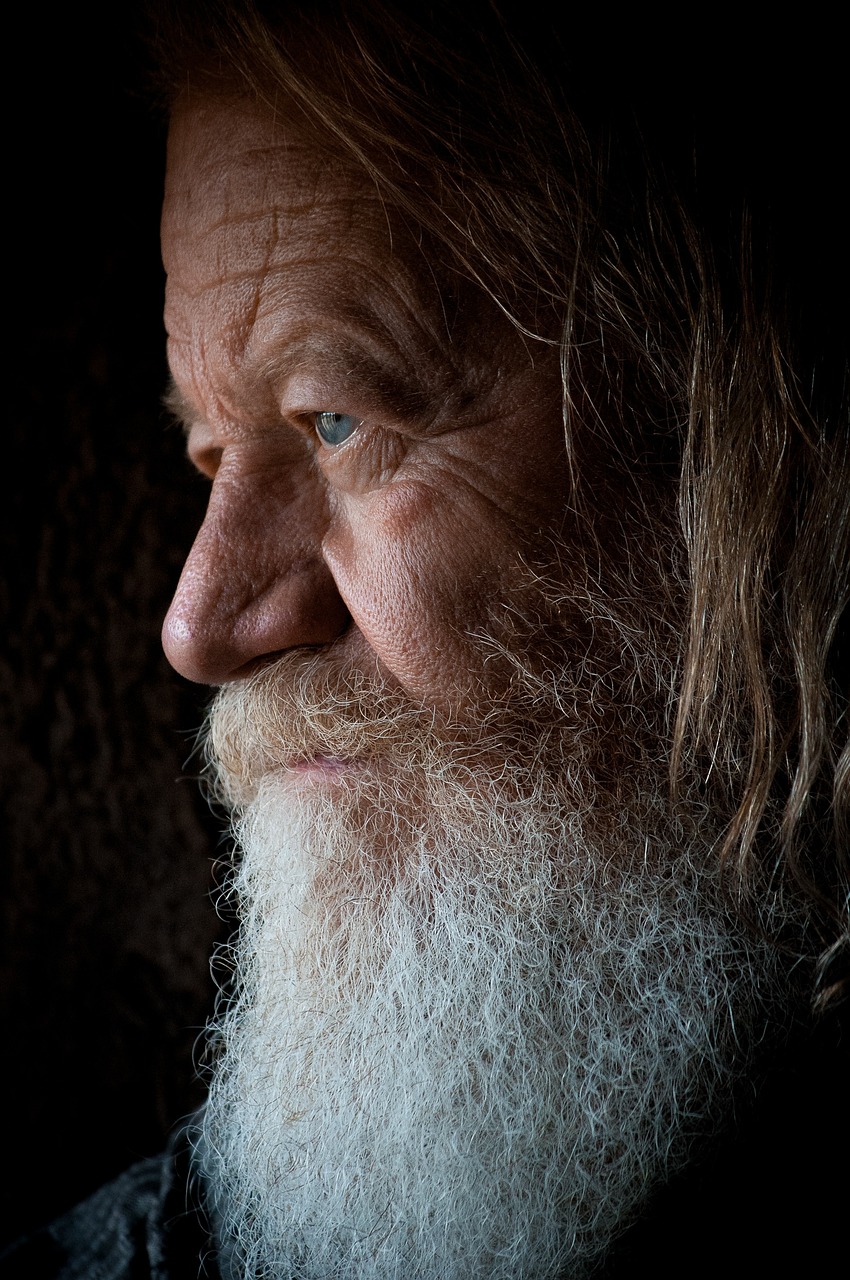Imagine a world where Asian men with beards were a rare sight, but now they are becoming increasingly popular and admired. This unexpected trend has captivated people’s attention, as it challenges traditional norms of beauty and masculinity. In this article, we will explore the reasons behind this shift, the impact it has on self-expression, and how it reflects a changing cultural landscape. Brace yourself for a fascinating journey into the rise of Asian men with beards.
The History of Asian Men and Beards
Ancient Asian civilizations and facial hair
In ancient Asian civilizations, facial hair was often seen as a symbol of wisdom, maturity, and masculinity. Emperors and high-ranking officials in dynasties such as the Ming and Qing periods of China were known to grow long, well-groomed beards to signify their authority and leadership. Similarly, in Japan, the samurai class regarded facial hair as a sign of honor and dignity. These historical examples demonstrate the longstanding significance of beards in Asian cultures.
Traditional views of masculinity in Asian cultures
Asian cultures have traditionally placed a strong emphasis on discipline, restraint, and conformity. In some societies, clean-shaven faces were considered the ideal representation of masculinity. This belief can be traced back to Confucian ideals, which emphasized maintaining harmony and following societal norms. As a result, many Asian men adhered to grooming practices that involved shaving their facial hair regularly.
The influence of Western ideals on Asian beauty standards
With the spread of Western culture and media in the 20th century, there was a noticeable shift in Asian beauty standards. Western ideals of masculinity, which often included facial hair as a symbol of ruggedness and maturity, began to influence Asian perceptions of attractiveness. This cultural exchange led to a reevaluation of traditional grooming practices and an increasing acceptance of facial hair among Asian men.
Factors Contributing to the Rise of Asian Men with Beards
Globalization and exposure to diverse cultures
The process of globalization has connected different parts of the world, allowing for the exchange of ideas, fashion trends, and grooming practices. Asian societies became more exposed to diverse cultures, including those where beards were highly regarded. This exposure stimulated curiosity and encouraged Asian men to explore new grooming styles, leading to a rise in the popularity of beards.
The rise of social media and online communities
Social media platforms and online communities played a crucial role in shaping grooming trends among Asian men. As more individuals shared their personal style journeys and experiences, it became easier for Asian men to find inspiration and role models who showcased different beard styles. Online platforms allowed for the exchange of tips, techniques, and product recommendations, creating a supportive and encouraging environment for those interested in growing and maintaining beards.
Increased acceptance and celebration of cultural diversity
In recent years, there has been a significant shift towards embracing cultural diversity and celebrating individuality. This change in societal attitudes has contributed to the rise of Asian men with beards. Cultural practices that were once seen as foreign or unconventional are now being recognized as valuable expressions of identity. As communities become more inclusive and accepting, there is greater room for Asian men to confidently embrace their facial hair and showcase their unique style.

Celebrity Influence on Asian Men’s Beard Trends
Hollywood actors embracing facial hair
The influence of Western media, particularly Hollywood, has been instrumental in shaping grooming trends worldwide. Asian audiences have been exposed to Hollywood actors and celebrities who sport stylish and well-groomed beards. This portrayal of masculinity has become aspirational for many Asian men, inspiring them to experiment with different beard styles and break free from traditional beauty norms.
K-pop idols challenging traditional beauty norms
K-pop, a genre of pop music originating from South Korea, has gained immense popularity around the world. K-pop idols, known for their exceptional talent and distinctive fashion sense, have challenged traditional beauty norms by embracing facial hair. By deliberately contrasting against the clean-shaven look commonly associated with Asian male idols, these K-pop stars have played a pivotal role in normalizing and popularizing beards among Asian men.
Influential Asian social media personalities
Asian social media personalities, also known as influencers, have emerged as influential figures in shaping grooming trends. These individuals use their platforms to express their personal style choices and advocate for self-expression. Many Asian influencers have showcased their beards and shared their grooming routines, encouraging their followers to embrace their own identities. Their authenticity and relatability have had a profound impact on Asian men seeking inspiration and validation in their grooming choices.
Cultural Significance of Beards in Asian Societies
Associations with wisdom and seniority
Throughout Asian history, beards have often been associated with wisdom and seniority. In many cultures, the presence of facial hair signifies the accumulated knowledge and experiences of an individual. Beards convey a sense of maturity, which is highly respected and revered in Asian societies. This association with wisdom adds a cultural significance to beards, attracting Asian men who wish to embody these qualities.
Beards as a symbol of masculinity and virility
In Asian cultures, masculinity is deeply rooted in traditional values such as strength, resilience, and authority. Beards are viewed as one of the physical manifestations of masculinity, symbolizing maturity, power, and physical attractiveness. Growing a beard can be seen as a way for Asian men to assert their masculinity and express their individuality in a manner that aligns with their cultural background.
Cultural and religious significance
In some Asian cultures, beards hold cultural and religious significance. For example, in Sikhism, followers are required to maintain uncut hair, including their beards, as a symbol of respect for nature and God’s creation. Similarly, in certain Muslim communities, growing a beard is considered a religious duty and a reflection of one’s commitment to their faith. These cultural and religious beliefs contribute to the importance and reverence placed on beards in Asian societies.

Beard Grooming and Styling Tips for Asian Men
Understanding your facial hair type and growth patterns
Before embarking on a journey to grow a beard, it is essential to understand your facial hair type and growth patterns. Asian men often have unique hair textures, which may require specific grooming techniques and products. Consulting with a professional barber or stylist can help determine the best approach for your individual needs and optimize the results of your beard grooming routine.
Choosing the right beard style for your face shape
Different face shapes complement various beard styles. Understanding your face shape can help you select a beard style that enhances your features and suits your personal style. For example, round faces may benefit from more angular beard styles to create definition, while square faces can be complemented by softer, more rounded beard shapes. Experimenting with different styles and seeking advice from professionals can help you find the perfect beard style that flatters your face.
Maintaining healthy and well-groomed facial hair
To ensure your beard remains healthy and well-groomed, it is essential to establish a consistent beard care routine. This routine may include regular washing, conditioning, and moisturizing of your facial hair. Trimming and shaping your beard can also help maintain a polished appearance. Additionally, using beard oils or balms can keep your facial hair soft and hydrated. Regular maintenance and proper grooming not only improve the look of your beard but also contribute to its overall health.
Challenges and Misconceptions Faced by Asian Men with Beards
Stereotypes and assumptions about masculinity
Asian men with beards often face stereotypes and assumptions about their masculinity. Some individuals may mistakenly believe that Asian men cannot grow full or thick beards, perpetuating the idea that Asian masculinity is somehow inferior. Breaking these stereotypes requires challenging societal expectations and embracing diverse representations of masculinity. By confidently wearing their facial hair, Asian men with beards can redefine what it means to be masculine.
Cultural expectations and familial pressures
Asian cultures place a strong emphasis on familial relationships and respect for elders. In some cases, growing a beard may be met with resistance or disapproval from family members who adhere to more traditional grooming standards. It is important for Asian men to engage in open and respectful conversations with their loved ones, sharing their desire to express their individuality while honoring cultural values. By fostering understanding and acceptance, individuals can navigate familial pressures and pursue their desired grooming choices.
Navigating workplace norms and professionalism
In certain professional environments, having a beard may be seen as contrary to workplace norms or incompatible with a professional appearance. Asian men with beards may face challenges in finding work opportunities or promotions due to biased perceptions rooted in traditional grooming expectations. Encouraging organizations to review and revise their grooming policies to be more inclusive can allow individuals to express their personal style while maintaining professionalism.

Asian Men with Beards as Trailblazers for Cultural Representation
Breaking stereotypes of Asian masculinity
Asian men with beards challenge prevailing stereotypes of Asian masculinity, demonstrating that strength, confidence, and individuality come in diverse forms. By proudly embracing their facial hair, these trailblazers show that Asian men can embody both traditional values and contemporary expressions of masculinity. Their presence in various spheres of influence paves the way for greater representation and appreciation of diverse Asian identities.
Promoting diversity in mainstream media
The visibility of Asian men with beards in mainstream media helps promote diversity and inclusion. By showcasing the unique styles and experiences of Asian men, media platforms contribute to a more accurate representation of an increasingly globalized world. This increased representation encourages greater acceptance and celebration of diverse grooming choices, dismantling beauty standards that are limited and exclusionary.
Inspiring and empowering future generations
Asian men with beards serve as inspirational figures for future generations. By challenging societal norms and embracing their individuality, they exemplify the power of self-expression and encourage others to do the same. Their influence extends beyond grooming trends, instilling a sense of confidence, pride, and empowerment in Asian men who may feel constrained by societal expectations.
The Future of Asian Men’s Beard Trends
Continued evolution of beard grooming and styling
As grooming trends continue to evolve, Asian men’s beard styles will likely become even more diverse and creative. With increased access to grooming resources and information, Asian men will have the opportunity to experiment with various techniques, products, and styles to curate their own unique looks. The future holds boundless possibilities for innovative and personalized expressions of Asian masculinity.
Integration of traditional Asian aesthetics with contemporary trends
Asian men’s beard trends will likely incorporate elements of both traditional Asian aesthetics and contemporary grooming practices. The fusion of cultural heritage and global influences will result in fresh and exciting beard styles that pay homage to Asian identities while embracing the diversity of global grooming trends. This integration will continue to shape Asian men’s perceptions of beauty and masculinity.
Exploring new forms of self-expression
With changing societal attitudes and the growing acceptance of diverse grooming choices, Asian men will have the freedom to explore new forms of self-expression. Beards may serve as a starting point for conversations about individuality, identity, and representation. Asian men will continue to challenge existing beauty norms, revolutionizing the ways in which masculinity is defined and celebrated.

Celebrating Asian Masculinity and Individuality
Embracing personal choices and self-confidence
Celebrating Asian masculinity involves embracing personal choices and cultivating self-confidence. Asian men should be encouraged to express their individuality authentically, acknowledging that beauty is subjective and diverse. By fostering an environment that values personal choices and self-confidence, Asian men can confidently embrace their unique expressions of masculinity, including their grooming choices.
Recognizing the diverse expressions of masculinity
Asian masculinity encompasses a wide spectrum of expressions, each with its own value and significance. It is crucial to recognize and appreciate the diverse ways in which Asian men choose to express their masculinity, including their grooming styles. By moving beyond one-dimensional stereotypes, society can create space for a more inclusive and nuanced understanding of Asian masculinity.
Promoting inclusivity and respect
Promoting inclusivity and respect means acknowledging and celebrating the different experiences and choices of Asian men. It involves creating safe and supportive spaces where Asian men can express themselves without fear of judgment or ridicule. By promoting dialogue, understanding, and respect, society can work towards dismantling harmful stereotypes and fostering a more inclusive and accepting environment for all.
